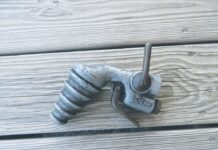Area trappers may be looking at a decent paycheck for a change. It’s been several years since raw fur prices have rewarded those dedicated outdoorsmen who work the steel for anything other than the sheer joy of being out there, but reports of rising prices are encouraging.
Fur market
Make no mistake, raw fur prices are driven by the international marketplace, a distant downstream price guide which is often two or three sales away from a local trapper’s pocketbook. That is, local trappers sell their harvest to area and regional buyers who in turn sell their stockpile to big fur houses who then market to international buyers.
Best bet for trappers is to sell at auctions where several fur buyers compete for the pelts. Value, or desirability, of raw fur is determined by a grading process, which is a combination of size, shade, color, and quality.
A professional grader can determine the grade of a pelt in seconds and buyers can too.
North American Fur Auctions one of the top three fur houses in the world, is probably the most noted final destination for local furs. NAFA sells to garment and footwear manufactures from around the world, a market that is driven by the “newly-rich” countries of the world such as China, where fur is still recognized as stylish and functional.
Background
Although world buyers and newly-rich marketplaces fuel auction prices, NAFA is anything but new. The company’s roots were planted by the Hudson’s Bay Company, a wilderness to main street fur trading company originating in the 1600’s.
Fur inventories in Chinese warehouses can be the driving force for fur prices paid to local trappers. If the storage racks are full, the price goes down. It’s as simple as that.
Interestingly, a large part of the demand for garment quality furs is for muskrat pelts, particularly targeting the belly area fur which is soft and nearly impermeable to moisture, a fur of choice for lining cold weather boots.
Mild conditions locally may have made trapping a bit easier for trappers thus the harvest to date may be up. Auctions to be held in the next few weeks will tell the tale. The first auctions of the winter produced encouraging prices.
Prices
While local “first tier” sales will be for less than final NAFA prices, trappers should benefit from the trend. NAFA reported auction prices of $8 and up for muskrat, $60 and up for coyotes, $25-50 for red fox and $13-19 for raccoon.
Consider this: a trapper has to be dedicated to his trade because he’s not going to get rich regardless of fur prices. His costs are prohibitive including gas, supplies, etc. His efforts are chilling including wading in near freezing water, chopping ice, walking trap lines and more.
Once caught, a fur has to be removed, fleshed, stretched, dried, conditioned, stored and sold. It’s hard work, a labor of love for those tough enough to do it.
It has been amazing to watch the marketing appeal of coyote hunting. New gun designs, scopes, ammo and other firearm accessories, clothing, calls and you name it, have been specifically designed for coyote hunters.
Pick up any outdoor magazine and hang on to your wallet. Now that most outdoor magazines have evolved from good writing to better paying advertising, it’s all about appealing to the hunter and convincing him that success is much easier with the right stuff while in truth, success, if measured by coyotes killed, is best achieved with practice, experience and determination.














i trapped for 15 years and i loved it till the bottom fell out of the price.I sure hope the price goes up ii would love to trap again.I use to run 200 traps every day of the season.Man if that wont keep you in shape nothing will.
I remember those days I was in the fur business 25 years a dealer in nyc
I remember the good money days in NY back in the late 1970 and the early 1980’s Now here in Washington State we are banned to use leg hold traps.I think that rifle hunting coyotes and foxes is what I will stick with. Happy Trapping and Hunting